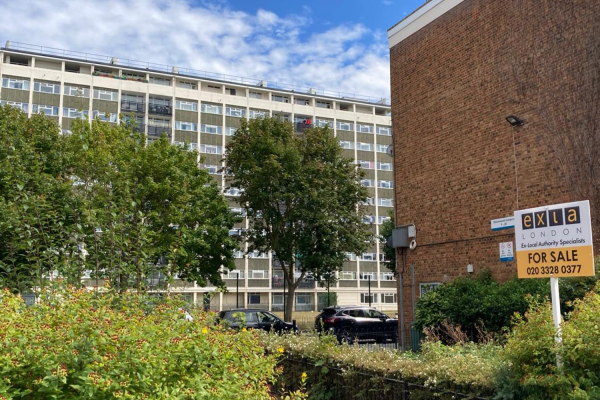A buy-to-let mortgage is a loan which the loanee plans to use to purchase a property to rent out to tenants. Like other mortgages, the property is a security which the lender can repossess should the landlord fail to keep to the terms of the loan (e.g. getting in arrears on equity or interest payments).
Traditional residential mortgages should not be used for purchasing properties to let, because the terms of those mortgages specify that the borrower will be the resident of the property. If you have been living in your property for a while with a residential mortgage, but then plan to move out and let it to tenants, then your lender may have some flexibility so long as you get their permission and agree to pay a little more. This can be cheaper than buying a new property with a buy-to-let mortgage.
Usually, however, you should get a buy-to-let mortgage if borrowing for a property you plan to let. If you have a residential mortgage on a property that you plan to let, then you can convert it to a buy-to-let mortgage by speaking to your lender.
Buy-to-let mortgages are specialist loans and are sometimes called BTLs. They take into account the different risks lenders face from dealing with landlords and properties that will be lived in by a succession of tenants. As such, they are usually more expensive than residential mortgages and slightly harder to come by.
However, the good news is there are still plenty of deals out there, especially for the landlord who might be dipping their toe in property investment for the first time. This article outlines the way buy-to-let mortgages work.
Buy-to-Let Mortgage Mechanics
With a buy-to-let mortgage, you borrow the amount required to purchase a rental property from a bank, building society or finance company. The loan runs over a specified number of years, usually up to 25, but possibly longer. You will be responsible for the monthly repayments. You will be required to arrange landlord building and contents insurance.
Typically, landlords repay the interest only on their buy-to-let mortgages, which means the monthly payment is much less than it would be with paying off the capital (i.e. the value of the property) as well. This approach means you need a plan in place to repay the loan in full when the mortgage period comes to an end. In most cases, this will mean selling the property, remortgaging or settling up with private funds.
Some landlords prefer to repay capital and interest, so that the mortgage debt decreases each month, thereby increasing the amount of capital they hold in the property. At the end of the mortgage period, there is no more mortgage to pay, and the property is debt-free and highly profitable.
The Cost of a Buy-to-Let Mortgage
If you are starting to think about purchasing a property to let, the first thing you need to know is that you need a hefty deposit to go with a buy-to-let mortgage. Typically, you will be expected to fork out 20 to 25% of the purchase price – a significantly higher amount than most people would be asked to pay on a residential mortgage, which can be as low as 5%.
The extra cost doesn’t end there. You will have to pay a higher rate of interest on your buy-to-let mortgage loan, although that rate will come down if you can increase the deposit. The best deals are usually given to landlords who can afford a 40% deposit or more. A typical fixed-rate for buy-to-lets at the time of writing might be 3%, nearly 2% above a standard residential mortgage rate.
You should also factor in stamp duty when making your rental purchase. Although the Government axed stamp duty on residential properties under £500,000, buy-to-let or second home properties still attract a 3% charge starting at £40,000 up to the £500,000 ceiling, with rates rising further beyond that.
So, for example, if you purchased a buy-to-let for £200,000, you would pay 3% stamp duty on £160,000 of it, which equates to £4,800.
How Much Can You Borrow?
Working out how much a lender is willing to risk is different with buy-to-let mortgages. With a residential mortgage, there is usually a criterion of your salary (or combined income) and whether or not the mortgage payment is likely to overstretch you when considering all your outgoings.
But with a buy to let, lenders want to be sure any rent you get for the property will cover your mortgage repayments – and more besides.
Interest cover ratios
Your lender will put your application through affordability assessments, and part of that is interest cover ratios (or ICRs) which will calculate how much profit you are likely to make on your property. The ICR is calculated as the ratio to which the rental income must cover the mortgage, tested at the interest rate. In this example, let’s assume it’s 3.5%.
Say you borrow £150,000, which makes your monthly interest payment £437.50 (£150,000 x 3.5% = £5,250 a year, so £437.50 a month). Lenders are required to test at 125%, which means the projected rental income from the property must be 125% of the repayment. In our example, we need monthly rent, therefore, to be £546.88. You might expect to confirm a rent of £750 per month, giving an ICR of 1.32, which should just about fall within the broadly accepted ratio range of 1.25 and 1.55.
However, there could be a spanner in the works.
What is a buy-to-let mortgage stress rate?
Lenders are not likely to conduct the test at the current interest rate. They will need to be more conservative, using a higher notional interest rate to take any unexpected events or future sharp interest rate rises into account.
Perhaps they might use 5%. With our example, that now means monthly interest payments of £625. Add the 125% test, and that equates to £781.25. This puts the figure above your monthly £750 rental and will lead to a refusal.
You can see how small changes in the lending criteria and stress testing can make a significant difference to whether or not you can get the buy-to-let mortgage that you need. If only it were as simple as stress testing your own income. Shopping around for a fair deal that works for you is essential.
How much could you be letting your property for? Use our Rent Calculator to find out!
Calculate market rentWhat Can Improve Your Chances of Getting Approved?
Just because you failed an initial stress test, it doesn’t mean you have to give up all hope. Very often, a lender will explore ways to make the figures work for you and them. You can try and come up with a higher deposit, for example, reducing the amount you need to borrow, cutting those monthly interest payments and improving your ICR.
Some lenders will look at a practice called “top-slicing”. Here, they explore your other means of income and investments to see if you could manage if things took a turn for the worse.
They need to know that you can cover the higher payments if interest rates were to shoot up a couple of per cent – even if this seems incredibly unlikely in this post-financial crash era of monetary policy. And then what happens if you have no tenant for four months? Can you cope without the rental income for that period?
We should be clear that only a small minority of lenders will accept top-slicing, so discuss this with your mortgage broker first to avoid disappointment.
Buy-to-Let Mortgages for First Time Buyers
Nothing is stopping you getting a buy-to-let mortgage, even if you have never bought your own home. For those without a residential mortgage under their belt, however, lenders may be a little thinner on the ground. Without the capital behind you in your own home, you might not be such an attractive proposition.
And while you would escape the stamp duty payment other buy-to-let investors pay (because it will be your first and only property), that might be a short-lived advantage. For if and when you do want to buy your own home with a residential mortgage, you might be subject to stamp duty – and lenders will need to assess how much debt you have on your buy to let.
Speak with a Mortgage Broker
While you might have reservations about what a buy-to-let mortgage entails, at least you can see from this guide that it doesn’t have to be overly complicated. Once you understand the basic restrictions and stress tests lenders require, you can begin to get a feel for how much you can borrow.
Happily, landlords can speak to mortgage brokers who can do much of this on your behalf. Or, if you are comfortable using your own bank or building society, they can talk you through your options. Buying your first rental property might be more within reach than you thought. You could be picking up the keys and getting references for your first tenant sooner than later.




Start the discussion at community.openrent.co.uk